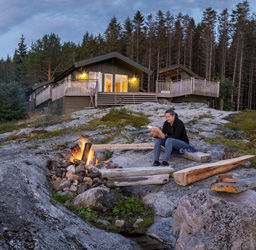A common challenge for many Canadian home buyers is coming up with the money to make a down payment on a first home.
One way to help make the dream of home ownership a reality is by using the Home Buyers’ Plan, which lets first-time buyers withdraw up to $35,000 from their RRSP to contribute to the purchase or construction of a home.
Financial advisors typically caution against withdrawing money from an RRSP to cover other costs, largely because you’ll have to pay tax on money that is otherwise sheltered. Under the Home Buyers’ Plan, however, the withdrawal is tax-free.
The Home Buyers’ Plan is like making an interest-free loan to yourself. If you withdraw money under the plan, you must pay it all back into your RRSP within 15 years.
How do I use the Home Buyers’ Plan?
To start, you need to be a Canadian resident who has an RRSP with some money in it, and that money needs to have been there for at least 90 days before you can withdraw it under the plan.
Before making a withdrawal, you’ll need to fill out some paperwork for the Canada Revenue Agency, and the institution that manages after your RRSP. If you don’t go through the proper steps before withdrawing the money, you may be penalized by having to pay tax on it.
Can I team up with my spouse?
If both of you qualify as first-time buyers, you and a spouse can combine forces and put a total of $70,000 from your RRSPs toward your home build or purchase.
How does repayment work?
Repayment starts two years after you withdraw money under the plan. The CRA will send you a statement indicating your balance owing, and the minimum required payment. To make a payment, simply contribute to your RRSP, then designate the amount as Home Buyers’ Plan repayment on your tax return. You can pay the loan back ahead of schedule without penalty, but it must be repaid in full within 15 years.
If you don’t make the minimum repayment in any given year, the unpaid amount must be declared as income on your tax return.
Can I be a first-time buyer more than once?
The Home Buyers’ Plan helps turn renters into owners. Even if you’ve owned a home before, and even if you used the plan to buy it, you could qualify again as long as enough time has passed since you lived there, and as long as your original loan has been fully repaid.
According to the plan, you are a first-time buyer if you did not occupy a home that you owned, or one that your current spouse or common-law partner owned, during the four calendar years prior to the year of withdrawal, and up to 30 days before the withdrawal. For instance, if you withdrew funds on July 31, 2020, your four-year period began on January 1, 2017 and ended June 30, 2020.
Can I use the Home Buyers’ Plan to buy a vacation home or a rental property?
No. Under the plan, a qualifying home must be your principal place of residence within one year of buying or building it.
What if I withdraw money but can’t buy a home?
If you can’t buy or build a home by October 1 of the year following a withdrawal, you can cancel your participation in the Home Buyers’ Plan by filling out a cancellation form and attaching a letter of explanation. By December 31 of that year, you’ll also have to pay back the full amount you withdrew from your RRSP, or face paying tax on any unreturned amount.
Sounds good. What’s the catch?
If the Home Buyers’ Plan sounds too good to be true, remember the potential impact using it might have on your retirement, particularly if you’re a younger buyer. Sure, you’ll eventually pay back all the money you withdraw. But as long as it’s not invested, you’re not using it to grow wealth in your RRSP. Decades later, that could make a difference of tens of thousands of dollars in the value of your portfolio, reducing your income in retirement.
That being said, it’s a rare opportunity to get an interest-free loan, the minimum annual repayment amount is quite low, and the Home Buyers’ Plan enables many Canadians to get into the housing market.





